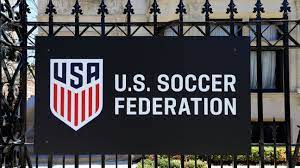October 22 – In 2016 the United States Soccer Federation finally fell in line with the world in regard to youth soccer age classification. The previous system using the school calendar (August 1st cutoff) was consigned to the scrap heap and the birth year January (1st cutoff) became the defining factor.
On November 22 it is expected that a new ruling will be made on the age group cut-off dates at a US Soccer Federation board meeting. It is a decision that is threatening the multi-billion-dollar youth soccer system with chaos as teams will potentially be broken up.
There are valid arguments on both sides of this decision, however, the loudest against the plan is that the US now looks set to go against the accepted wisdom of world football, after finally joining the party only eight years ago.
The reasons for change, while not backed by science or data are potentially as follows.
Social challenges: The birth year system separates children who are in the same grade at school.
‘Trapped’ players: Some players, particularly 8th graders and high school seniors, find themselves separated from their peers.
Participation concerns: There’s a belief that the birth year system may have led to decreased participation in youth soccer.
Alignment with US culture: Grouping by school year is more in line with how other youth activities are organised in the US.
It has been said that the pros of reverting to the school year are ‘Better social cohesion for young players’, ‘Alignment with school-based sports and NCAA regulations’, and the dream of ‘Potentially increased participation’.
The cons are noted as ‘Disruption to teams and players’, and ‘Challenges in transitioning with existing teams’.
Unsurprisingly the reaction by stakeholders has veered from sensible to hysterical befitting a youth system that is fractured by multiple stakeholders who too often seem to be chasing the almighty dollar rather than the development of the game.
The following comment on Reddit sums up a large majority of parents.
“It was specifically changed to calendar year to make it easier for player identification and development. That’s helpful for 0.1% of players in the country. “
Since the US re-entered the world’s conversation regarding football, the governing body (USSF) has demonstrated a spectacular habit of scoring ‘own-goals’ with this latest attempt another classic example of telling the world ‘you don’t know what you’re doing’.
Contact the writer of this story, Nick Webster, at moc.l1745673433labto1745673433ofdlr1745673433owedi1745673433sni@o1745673433fni1745673433
